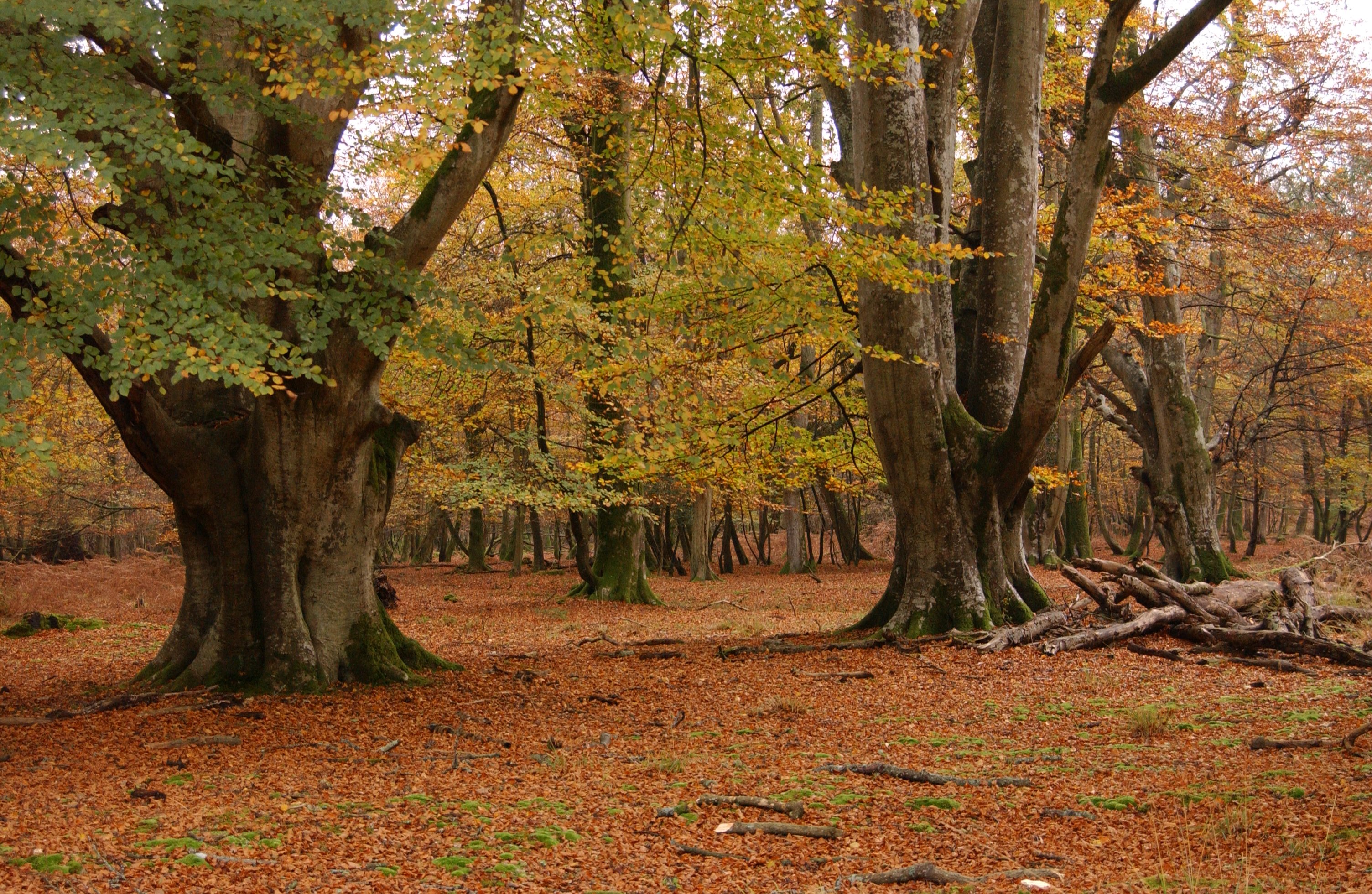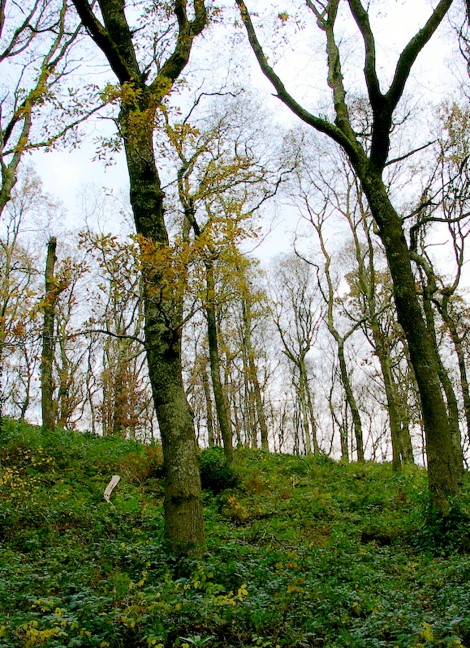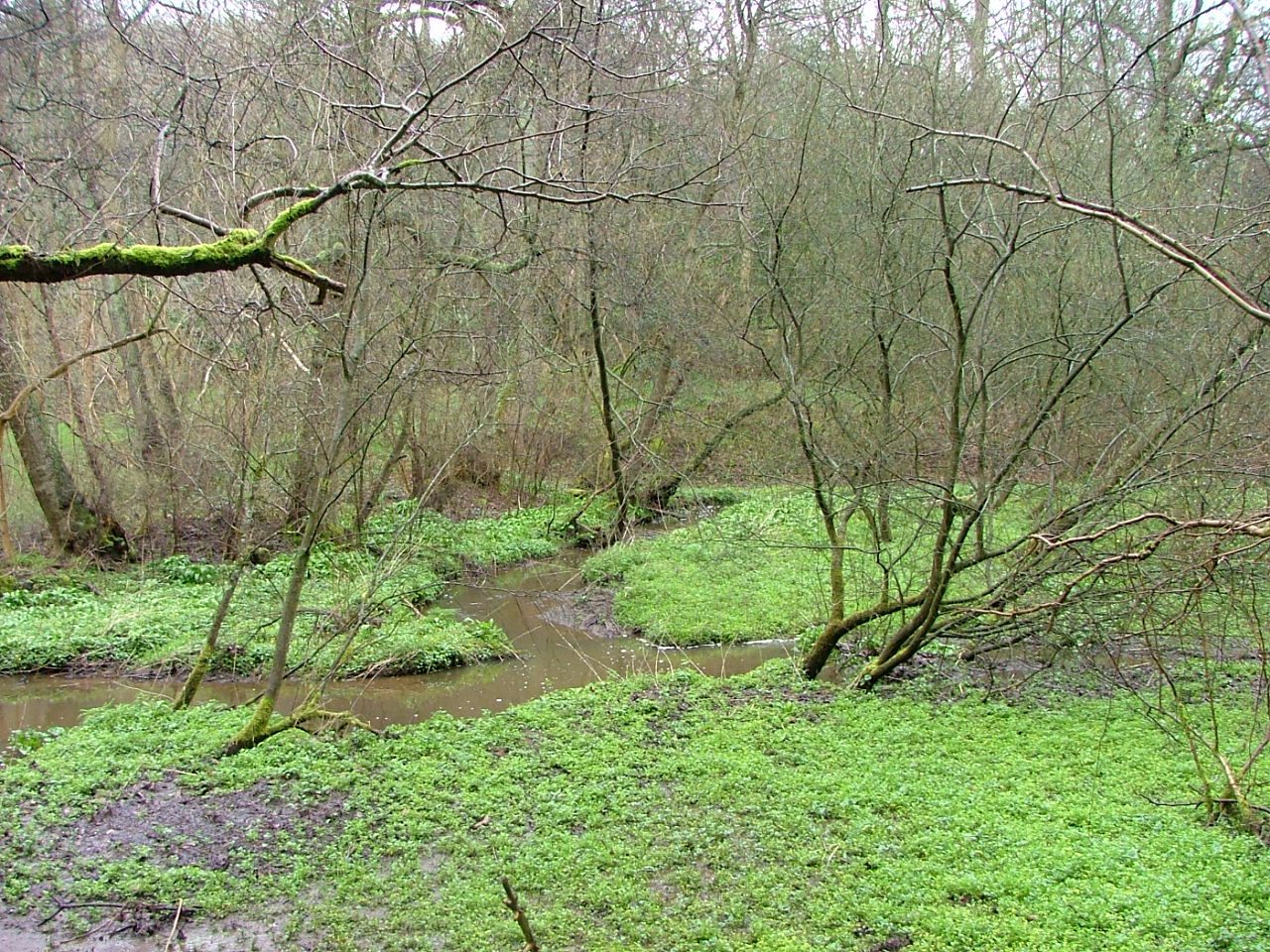Broadleaf Woodland Types
Ancient woodland
Ancient woodland is defined as land which has been wooded since at least 1600 AD in England. Prior to this there was little formal tree planting or maps reliably showing woodland cover. The animal, fungal and plant communities in these woods have developed over a long period of time, resulting in a complex and integrated ecosystem. They are very important for biodiversity and have been estimated to support more threatened species than any other UK habitat. They have several features that can be regarded as of "High Conservation Value", which include the following:
- old trees and deadwood - important in themselves and for the bats, invertebrates, fungi, and lichens that live on them;
- woodland flora - characterised by species that survive best in woodland conditions;
- woodland soils - often undisturbed and home to some of the most hidden, but also most functionally important elements of a woodland"s system such as mycorrhizal fungi, and
- human traces - some ancient and hidden among the trees, others from the present.
Note that ancient woodland refers to the age of the woodland site, not the age of the trees, i.e. ancient woodlands can contain young trees.
Non-ancient woodland
Sites wooded more recently than 1600 AD can still be rich in fauna, flora and fungi, but many are without the specialist woodland animals, plants and fungi characteristic of ancient woodland.
Those that have developed adjacent or close to ancient woodland can act as a site for migration and colonisation by ancient woodland species and with time these woods can develop more diverse communities.
They can also directly link or act as a stepping stone between isolated areas of ancient woodland. Where they lie adjacent to ancient woods, they can buffer the ancient woodland against the negative effects of intensive agriculture or built development.
Priority woodland habitat types for wildlife
There is not a strict definition which divides upland and lowland categories of broadleaved woodland, and altitude, although relevant, is not a defining feature. Broadly speaking upland woodland is associated with distinctly elevated, semi-natural landscapes throughout Britain (primarily in the north and west; Scotland, northern England, parts of Wales and south-west England).
Upland broadleaved woodland
Upland woodland communities include those that have a canopy dominated by oak (usually Sessile oak although sometimes Pedunculate) and birch woodland, both of which tend to occur on acid soils. Upland mixed ash woodland is associated with more base-rich soils (e.g. on limestone), or base rich flushes in oak woods which are often more species-rich than the surrounding woodland. Upland woodlands on acid soils characteristically have a poor ground flora; the mixed ash woodland is often more diverse. Birch woodlands in Scotland comprise stands of downy or silver birch, sometimes with rowan, willow, juniper or aspen, which have ill-defined boundaries that are variable over time in relation to factors such as grazing pressure, the impacts of fire and the cycle of birch senescence and regeneration. These woodlands tend to be unenclosed and grazed by livestock or deer.
Lowland broadleaved woodland
Lowland woodland types occur at relatively low altitudes (although occasionally grade into upland woods on the margins of upland zones) and on a broad range of soil types. They tend to be in enclosed landscapes with well defined boundaries. Many are ancient woodlands and there is often evidence of past coppicing or wood pasture now abandoned for grazing. Where oak is dominant in the canopy Pedunculate oak is generally the commoner of the two species but Sessile oak can be abundant locally along with hybrids of the two. Beech, a tree that forms one of the main canopy types, is considered native only in the south and east of Britain but occurs as the main canopy species in longstanding plantation woodland elsewhere in lowland Britain and occurs on both acidic and base-rich soils. Other species such as ash or lime can be the dominant canopy tree in some areas, or a varied mix of canopy trees might be present. There is a wide variation in the species complement of ground and shrub layer and understorey of lowland woodland, reflecting a range of soil conditions and past and existing management.
Wet woodland
Wet woodland occurs on waterlogged or seasonally wet soils, and is usually characterised by the presence of alder, birch and willow; tree species adapted to wetter conditions. Wet woodland can develop in a wide range of situations: on floodplains, as successional habitat within fens, mires and bogs, along streams, hill-side flushes, and in peaty hollows, and hence occurs on a broad spectrum of soil types; nutrient rich or poor, mineral or organic, acidic or base-rich. Wet woodland within or adjacent to other woodland types adds to the diversity the habitat and offers greater diversity of niches for species. It is also an important habitat in its own right, supporting a huge range of invertebrates, fungi and other wildlife.
Wood-pasture, parkland and orchards
Wood-pasture (occasionally referred to as Pasture-woodland) and parkland is open, grazed, wooded land, generally associated with grassland or heathland habitats and typically characterised by isolated, or "open-grown", mature or veteran trees which may have been managed by pollarding. Historically these landscapes were managed to provide both timber and grazing for livestock and deer and many are still grazed today. However, parkland can be indicative of a more ornamental, designed landscape which may contain many non-natives trees whereas wood-pasture has developed as part of a pastoral system, is less designed and generally contains more native tree species. Since grazing occurred naturally in primal woodland, the enclosure of woodland in order to exclude grazing is a form of design. Dead and decaying standing or fallen wood is an important feature of grazed woodlands, which are significant for invertebrates, fungi and lower plants. Small cavities and the micro-topography of tree bark can be very important for lichens and can also provide roosts for bats. Where grazing ceases and seedlings are not suppressed, closed-canopy woodland can develop, leading to the loss of many features. Similarly over-grazing prevents new recruits to maintain these essential habitats in the long term.


.jpg)
